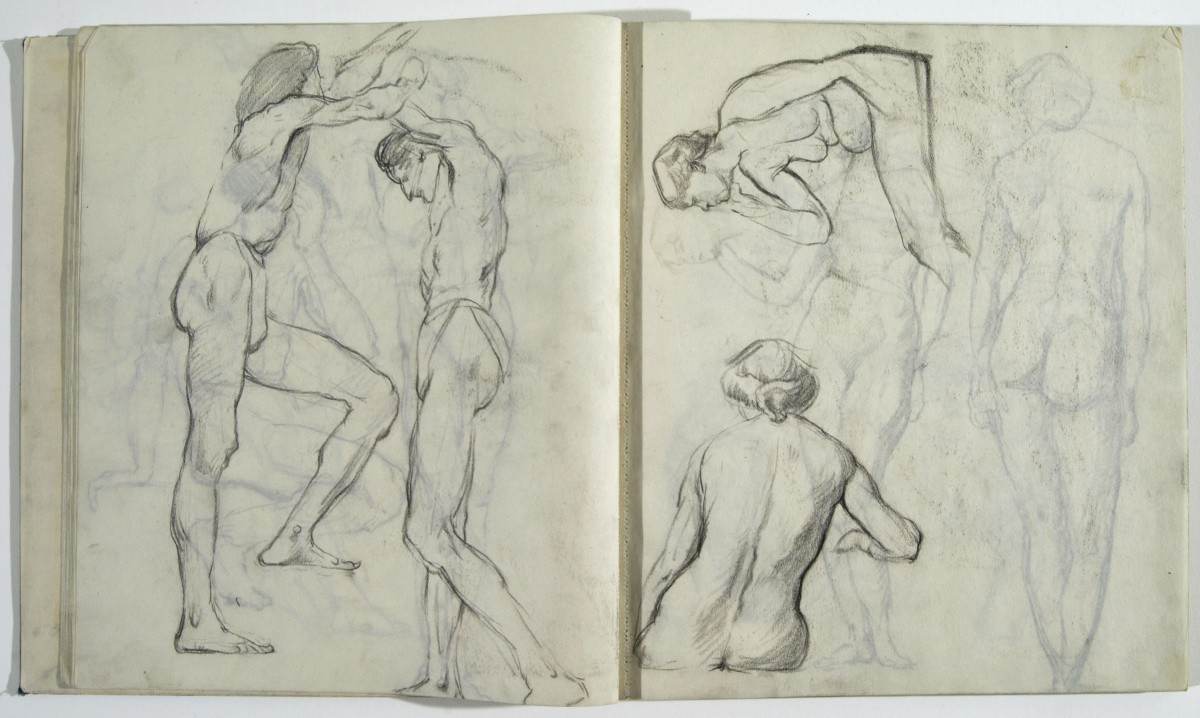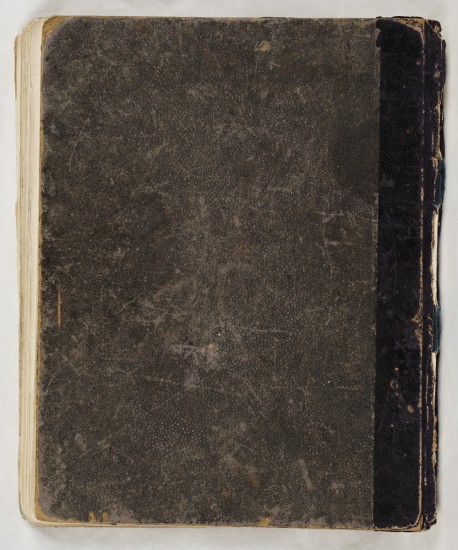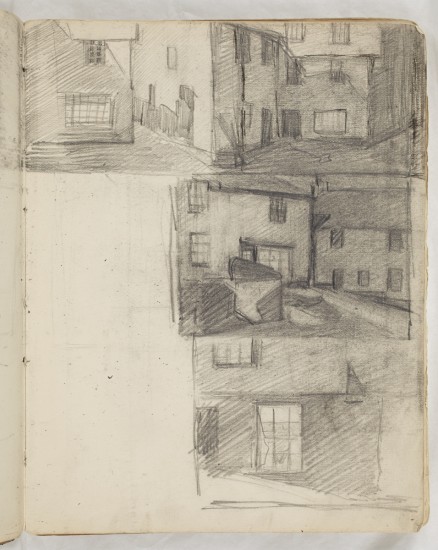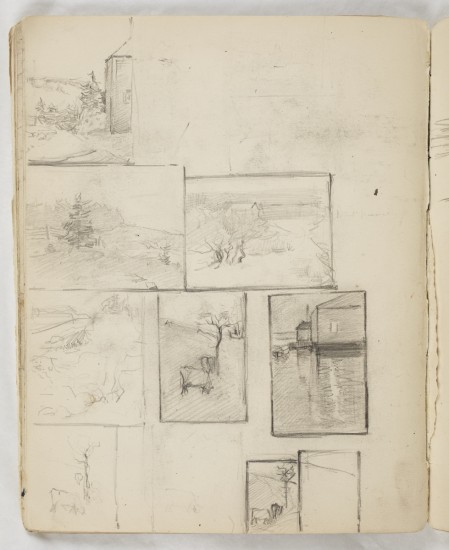Sketches of a travelling Impressionist
Learn more about Canadian painter Helen McNicoll by examining her sketchbooks with Renée van der Avoird, Assistant Curator, Canadian Art.
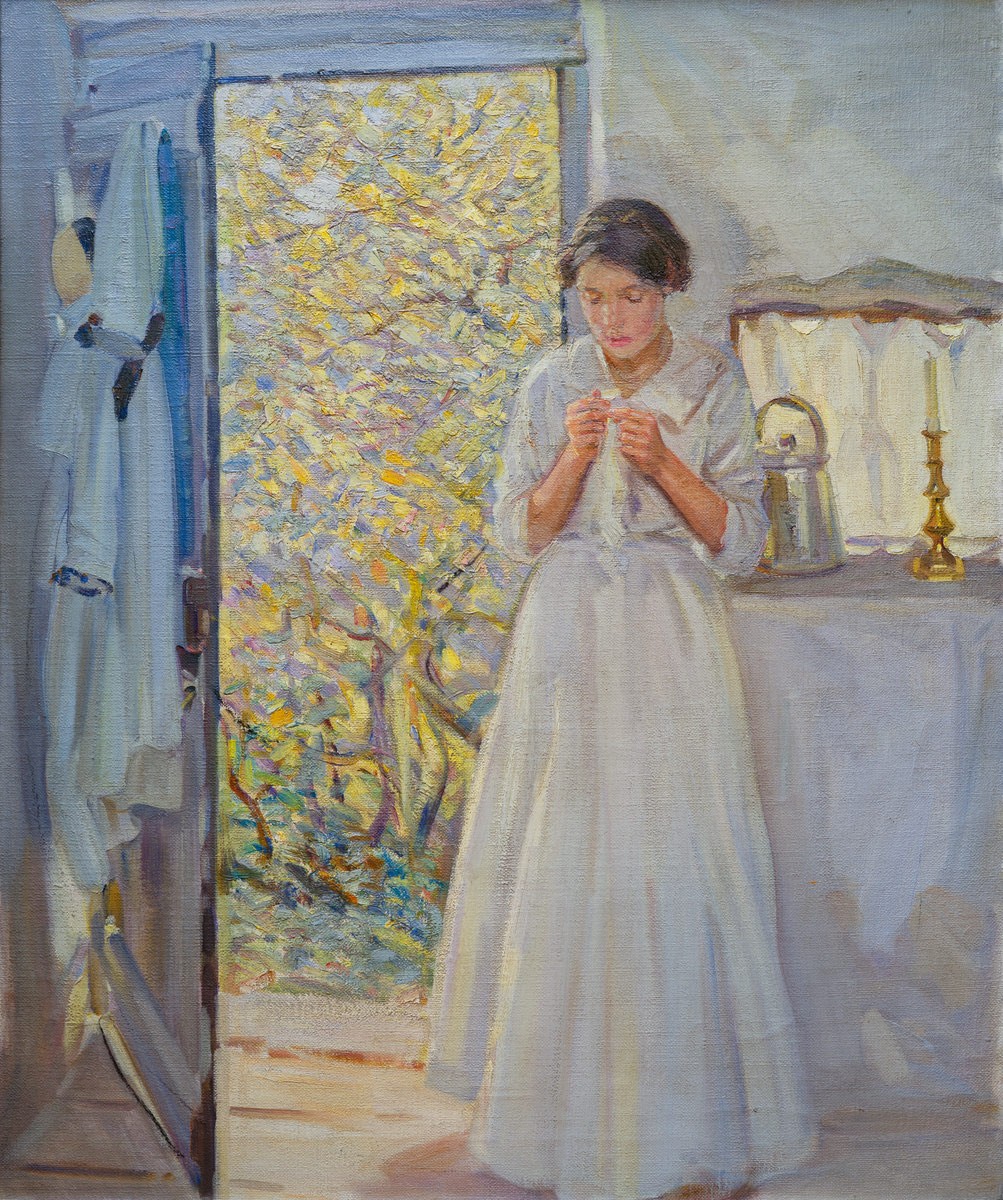
Helen Galloway McNicoll, The Open Door, c. 1913. Oil on canvas, Overall: 76.2 × 63.5 cm. From the collection of Samuel & Esther Sarick. Photo: AGO
By Renée van der Avoird, Assistant Curator, Canadian Art, AGO.
Sketchbooks offer a window into an artist’s process, ambitions, trials, errors, hopes, insecurities and generative ideas that may or may not lead to finished works of art. The sketchbooks of Canadian painter Helen McNicoll (1879-1915) are troves of compositional experiments and daily observations of the individuals close to her and landscapes she sought in her travels.
McNicoll consistently made sketches that would serve as source material for the vivid Impressionist paintings for which she is celebrated. In addition to eight McNicoll canvases, there are 13 of her sketchbooks in the AGO Collection. The sketchbooks, which were essentially a mobile studio for the artist as she travelled, range from cloth-bound hardcovers to small softcover folios. They span the breadth of her relatively short career, and offer a compelling glimpse into the artist’s development and creative endeavours.
One of Canada’s first women to achieve a successful professional career as an artist, McNicoll dedicated her life to art—a courageous act for a woman at the turn of the century. She lost her hearing at the age of two; however, McNicoll’s confidence and self-determination enabled her to integrate exceptionally well into hearing society: she played piano, attended professional art association meeting, and studied at prestigious art schools.
McNicoll began her formal education at the Art Association of Montreal, known for its progressive European-inspired academic curriculum. Under the direction of William Brymner, one of the first Canadian painters to study in Paris, McNicoll learned to draw the figure from reproductions of Old Master paintings and plaster-cast copies of classical sculptures, as was the custom at the time. Her command of proportion, anatomy, pose and movement, as well as her ability to capture the subjectivity of her sitters, are evident in these early drawings.
Encouraged by Brymner, McNicoll set off to England in 1902 to study at London’s Slade School, another liberal institution that encouraged equal enrollment of, and opportunities for, male and female students. Her sketchbooks from this period are lively reflections of living abroad in a thriving art centre. They also offer insight into art teaching practices as taboos of the time: the male models wear a loincloth, while the female models are naked.
Importantly, McNicoll’s sketchbooks exemplify the type of technical training she received at the Slade: meticulous attention to musculature and the interplay between light and shade. During these formative years, McNicoll learned to quickly capture body posture and movement—an approach that translated directly to her effervescent plein air paintings of young women working in rural settings.
After graduating from the Slade, the intrepid McNicoll travelled to artist colonies in England, France and Italy. Inspired by the countryside and the camaraderie of like-minded artists, she sketched and painted directly from nature, taking the inhabited landscape as her subject. She considered atmospheric elements, such as light and air, and strove for an unsentimental, natural approach in her treatment of animals and figures on the land. Among her most compelling canvases, such as The Open Door (c. 1913), were painted at St. Ives, an artist colony in Cornwall, England, a popular plein air painting destination, which in the 1940s attracted Barbara Hepworth and Ben Nicholson. McNicoll, who arrived in 1905, spent several years in the coastal community, attending the Cornish School of Landscape and Sea Painting, and perfecting her treatment of the shifting effects of natural light in both interior and exterior scenes.
When McNicoll died at the age of 35, she was on the verge of international recognition. While she never returned to Canada to live, she sent her paintings overseas to be exhibited in prominent Canadian exhibitions, and is credited, along with her contemporaries Maurice Cullen and James Wilson Morrice, to have introduced the Impressionist style and ethos to Canadian audiences. Her mastery of technique and subject matter, as well as her sheer dedication to her art practice—as illustrated by her sketchbooks—place her firmly amongst Canada’s most important historical artists.
Helen McNicoll’s paintings are currently on view in The Open Door: Helen McNicoll and Mary Hiester Reid in the Richard Barry Fudger Rotunda on Level 1 (Gallery 126).
Are you an AGOinsider yet? If not, sign up to have stories like these delivered straight to your inbox every week.


